While I can’t do a thing about the long lines, delays, cramped seats, or bad food, I can share reflexology and acupressure points for a better flight. If you’re flying, here’s a collection of rhand points that can help with motion sickness and nausea, stress and anxiety, fear of catching a cold when your seatmate is coughing or sneezing, difficulty doing number two because of the situation, and that’s not all. . .
There are also points that help improve circulation of your qi and blood, and a point that helps with ear pain and pressure during takeoff and landing. Booyah! Have a safe flight and enjoy your travels :).
DEPARTURE POINTS
1. Acupressure Point for Stress and Anxiety
If a hint of turbulence causes your heart rate to shoot up, Heart 7 can help calm your nerves. You can also massage this point to help release stress if your flight is delayed or your luggage is lost.
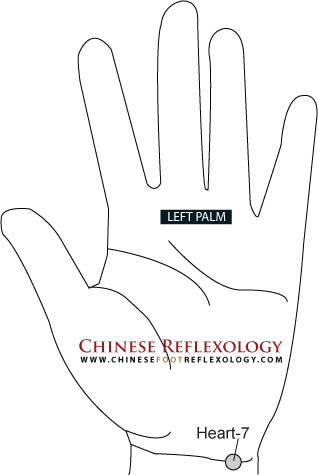 This point’s Chinese name is Shen Men, which means Spirit Gate. To find Heart 7, hold you palm face up in front of you. Take a look at the base of your palm where the hand meets the arm, and you’ll notice a prominent line at your wrist. After locating this wrist crease line, imagine a vertical line descending straight down from the where the base of your pinky finger meets your ring finger. Keep imagining this line going down until it meets the wrist crease.
This point’s Chinese name is Shen Men, which means Spirit Gate. To find Heart 7, hold you palm face up in front of you. Take a look at the base of your palm where the hand meets the arm, and you’ll notice a prominent line at your wrist. After locating this wrist crease line, imagine a vertical line descending straight down from the where the base of your pinky finger meets your ring finger. Keep imagining this line going down until it meets the wrist crease.
Press on the wrist crease where the imaginary vertical line crosses it. You want to feel for a slight indentation next to the tendon on the edge of your forearm, and that’s where your Heart 7 point is located. To stimulate this acupressure point, press and hold it with your thumb for 60 seconds on each arm.
And if turbulence does bother you, here are a couple of other things I find helpful: humming and yawning. No idea why, but I find they help keep me calm. Takeoffs and landings are no problem, I’m admittedly nervous when it comes to mid-air turbulence. Remember to breathe too.
2. Acupressure Point for Motion Sickness and Nausea: Pericardium 6
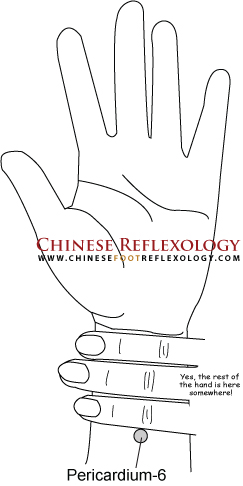 This acupressure point is actually a two-for-one point. That’s because Pericardium 6 or Nei Guan by its Chinese name, is used to treat nausea and vomiting, and it is also be used treat anxiety. So if you’re feeling slightly nauseous AND anxious, then you may find this point helpful.
This acupressure point is actually a two-for-one point. That’s because Pericardium 6 or Nei Guan by its Chinese name, is used to treat nausea and vomiting, and it is also be used treat anxiety. So if you’re feeling slightly nauseous AND anxious, then you may find this point helpful.
Pericardium 6 is located on your forearm, three finger-widths below the wrist crease that you identified when locating Heart 7. You’ll find this point right between the two tendons on the arm. Press your thumb pad on the point and hold for 60 seconds on each arm.
If you’re feeling stressed out, fearful, or anxious, you can massage both Pericardium 6 and Heart 7. Use these two acupressure points together for a double dosage of natural anxiety relief with Chinese Medicine. In total, this will take you about four minutes to massage both points. Feel free to press on these points during your flight up to once per hour if needed.
3. Reflexology Point to Avoid Catching Your Seatmate’s Cold
Well, let’s face it. Even if you’re in 23B, if someone in 44D has a cold, you’re probably breathing in the air that they exhaled several times during your flight. And if the person next to you has a cold…
Luckily, there’s a hand reflexology point that helps strengthen your Lung qi (life force energy) to defend against germs. Since you may have noticed this is a website about Chinese foot reflexology, you may wonder why am I sharing the hand point instead of the ones on your feet?
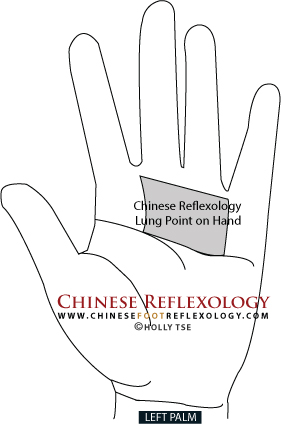 Reflexology points on the feet are actually more potent than the ones on the hand, but given the cramped quarters on the airplane (unless you’re flying Business Class, you lucky dog), it’s not really practical to be massaging your feet. I manage to do it, but I’m freakishly flexible in the hips and can actually touch my toe to my ear. I also displace my seven-year old son and majorly encroach on my husband’s personal space to do so. I wouldn’t recommend you do this while seated next to a stranger, even if they’re coughing into your personal breathing space :).
Reflexology points on the feet are actually more potent than the ones on the hand, but given the cramped quarters on the airplane (unless you’re flying Business Class, you lucky dog), it’s not really practical to be massaging your feet. I manage to do it, but I’m freakishly flexible in the hips and can actually touch my toe to my ear. I also displace my seven-year old son and majorly encroach on my husband’s personal space to do so. I wouldn’t recommend you do this while seated next to a stranger, even if they’re coughing into your personal breathing space :).
The Chinese Reflexology hand point for the Lungs is located on the upper portion of the palm, right below your three middle fingers. You can massage the Lung reflexology hand point by pressing on this area with your thumb and massaging in small circles for 2 to 3 seconds. Work your way across and down the point, and do this for about 60 seconds per hand. Do it once during the flight, and another time after you land.
4. Hand Reflexology Points for Social Anxiety Constipation
If you fly more than once a year on flights over five hours in duration, you’ve inevitably had to do number two on the airplane. However when the urge to go strikes, you have to crawl over the person sitting in the aisle seat, and then stand in a long line-up to use the restroom.
By the time it’s your turn, you may have had to hold it in for several minutes. Then compound that with the cramped washroom and the knowledge that a half dozen people are in line waiting for you, and one of them is huffing impatiently. As a result, you may find yourself unable to go.
I refer to this as social anxiety constipation. It’s not a real term, but it does describe the temporary constipation people experience when faced with an uncomfortable situation or environment to do their business (check and check for an airplane).
Fortunately, you’re in luck again because there are several Large Intestine points on your LEFT hand that help promote the smooth flow of qi (energy) through your bowels, which then help with a smooth bowel movement.
You’ll find full instructions on how to locate and massage these points in this article: Social Anxiety Constipation: Can’t Poo? Here’s What to Do . . .
I recommend reading the article because it’s important to massage these points the right way so that you follow the downward direction of feces out of the body.
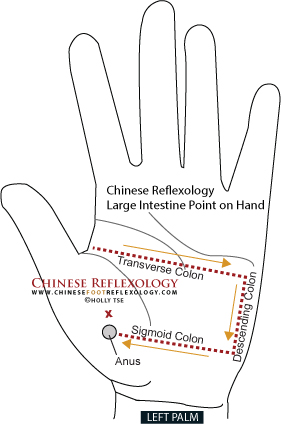 I know some of you are going to just look at the picture and not bother reading the accompanying article so at the very least, read this:
I know some of you are going to just look at the picture and not bother reading the accompanying article so at the very least, read this:
- The points in this diagram are for the LEFT hand only. The right hand is completely different, so don’t practice this on your right hand.
- Always massage in ONE direction only as indicated by the arrows. Do not massage back and forth or the opposite way as you’ll be going against the direction that qi (and your poo) is supposed to flow. Think of it like massaging in a CLOCKWISE direction when you are looking at your left palm. Do this 10 to 15 times.
- For the anus point, press in with your knuckle and twist for 10 to 15 seconds.
- Relax your abdomen as you massage the points and remember to breathe.
- Read the article for more directions.
5. Acupressure Point to Improve Circulation
I’ve been asked before if there are any reflexology points that help with swollen feet and ankles while flying. First, it’s important to understand what causes swelling in the lower legs. Essentially, it’s a backup in the lymphatic system causing lymph (fluid in the lymphatic system) to “pool” in the lower legs.
The reason this happens is because the lymphatic system is a network of vessels throughout the body that requires physical movement in order to move the lymph through the vessels. If you’re stuck sitting in your seat for hours, then you’re not moving your legs, and thus, not moving the lymph in the legs. Gravity then contributes to the “pooling” of lymph, which shows up as swollen ankles, feet, and lower legs for people who have a sluggish lymphatic system.
The best way to help clear the swelling is physical movement, which unfortunately is somewhat restricted on an airplane. Ideally, you’d address the underlying qi, physical, mental and emotional imbalances that contribute to a sluggish lymphatic system—and you’d do that before flying. If you’d like to learn more about bringing your body back into balance, I’d recommend reading my internationally bestselling book, Sole Guidance.
However, there is an acupressure point that helps to promote the flow of qi (body’s energy), which helps with overall circulation. There are actually two points, but one is on the foot (maybe too awkward to massage on the plane), and the other is on your hand, so I’ll walk you through how to locate and massage the hand point, which would be Large Intestine 4.
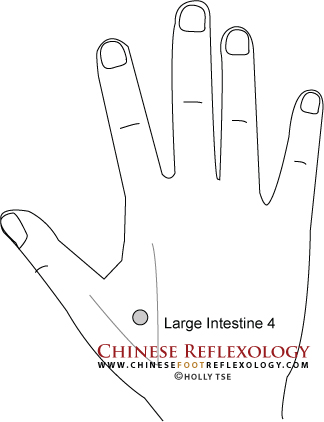 CAUTION: Large Intestine 4 should not be stimulated if you are pregnant. That’s because Chinese Medicine believes that too much moving qi can cause a miscarriage.
CAUTION: Large Intestine 4 should not be stimulated if you are pregnant. That’s because Chinese Medicine believes that too much moving qi can cause a miscarriage.
Large Intestine 4 helps with the overall flow of qi, blood, and lymph. It’s located on the top of the webbing of your hand between the thumb and index finger. To find this point, press your thumb and index finger together. You’ll notice a muscle bulging out when you do this. Large Intestine 4 is located on the highest point of the bulge. Use your thumb pad to press and hold this point for 60 seconds on each hand. Remember this point is not to be used if you are pregnant.
6. Hand Reflexology Point for Ear Pain and Discomfort During Takeoff and Landing
If you have trouble equalizing the pressure in your ears, the inner ear reflexology point may bring some relief. This point is super easy to locate and massage—a good thing when you’re feeling the sudden onset of discomfort or pressure as the plane changes altitude.
 The inner ear point is located on the top of your hand between the pinky and ring finger. It’s a small circle right between the base of these two fingers. To massage this point, use the knuckle of your index finger (of the other hand, unless you’re supremely double or triple jointed) to press and twist on the point.
The inner ear point is located on the top of your hand between the pinky and ring finger. It’s a small circle right between the base of these two fingers. To massage this point, use the knuckle of your index finger (of the other hand, unless you’re supremely double or triple jointed) to press and twist on the point.
Do that for about 15 seconds or 15 twists during takeoff and landing. If you experience issues with ear pain while flying, it’s likely that this point will feel sensitive, so use a firm pressure, but not one that causes the point to feel painful—slightly uncomfortable is okay.
After massaging the point, rest for about 15 seconds, and then you can massage the point again for another 15 seconds or twists. Feel free to do this, on and off, 3 or 4 times during takeoff and landing.
ARRIVAL POINT
Four emergency vehicles greeted our flight when we arrived. It was Christmas Day, and the tarmac was desolate because of the holiday. We were also cordoned off far away from the airport terminal and other planes. As I peered out of the cabin’s small oval window, I saw the flashing lights of a fire truck. This was not how we had planned the start of our vacation.
We were supposed to arrive on Christmas Eve, but our flight was cancelled due to “mechanical issues.” Several phone calls later, our family knew to expect us the following day. We boarded early on the same plane the next morning. Supposedly, the mechanical issues were resolved. For several hours, we flew blissfully unaware that the problem was not fixed.
It was only when we approached our destination that we began to suspect that something was amiss. The plane should have landed 30 minutes earlier, but we kept circling the airport. Finally, an announcement was made. We were advised that some type of equipment was not functioning, but the pilot reassured us that it was not a vital component, and that they had been trained to land without it.
 While we were pulling in for a landing, I considered what might flash through my mind if these were my last few moments. Surprisingly, I had few regrets. The only thing I earnestly wished I had done was to go see the Bay of Fundy, home to the world’s highest tides.
While we were pulling in for a landing, I considered what might flash through my mind if these were my last few moments. Surprisingly, I had few regrets. The only thing I earnestly wished I had done was to go see the Bay of Fundy, home to the world’s highest tides.
A flight attendant seated nearby mentioned it was “the flaps” that were not working. As we began our descent, I discovered that the flaps help keep the plane level. There was quite a bit of rolling and pitching, and then the plane hit the ground harder and sharper than normal. Quite honestly though, a landing in Las Vegas or Hawaii is much more of a wild ride.
As the plane eventually slowed down, the passengers broke out into applause. All the grumpiness and frustration from the delays were forgotten. We had all made it home safely.
If you consider that an airplane weighs over 80 tons fully loaded, it’s amazing that it can lift off—let alone fly suspended above the clouds. And it’s even more incredible that for just a few hundred dollars, you can board this technical masterpiece and travel across the country in just a few hours.
So yes, you may encounter surly flight attendants, crying babies, and lost luggage. But to fly! How amazing is that? To be able to visit your loved ones and hug them, explore distant lands, go on adventures, experience different cultures and tasty foods, and behold the wonders of the world.
The point for arrival is to always appreciate.
Wishing You Adventure and Exploration,
Holly
No Wifi? No Problem – FREE Quick Reference Chart
 Hey, did you want to access this article on the airplane? Don’t pay the sky-high (bad pun intended) Wifi fees :).
Hey, did you want to access this article on the airplane? Don’t pay the sky-high (bad pun intended) Wifi fees :).
Download the Flyer’s Quick Reference Chart for FREE. This informative chart gives you illustrations and instructions for the acupressure and reflexology points in this article. Just fill out the form below to receive it in your inbox.
Can’t see the form? Click here
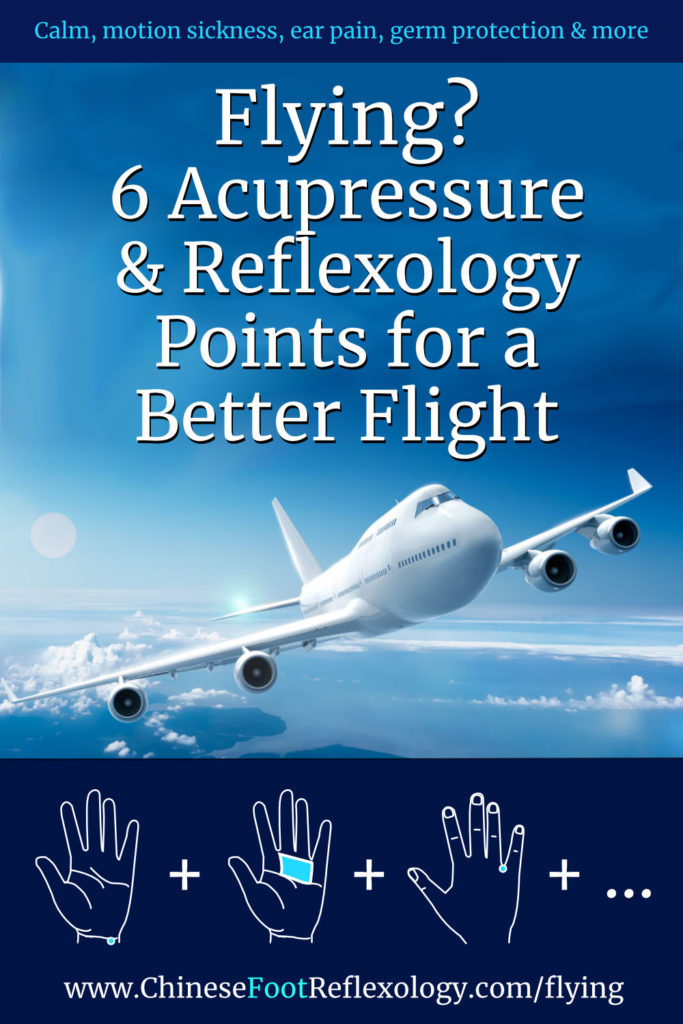
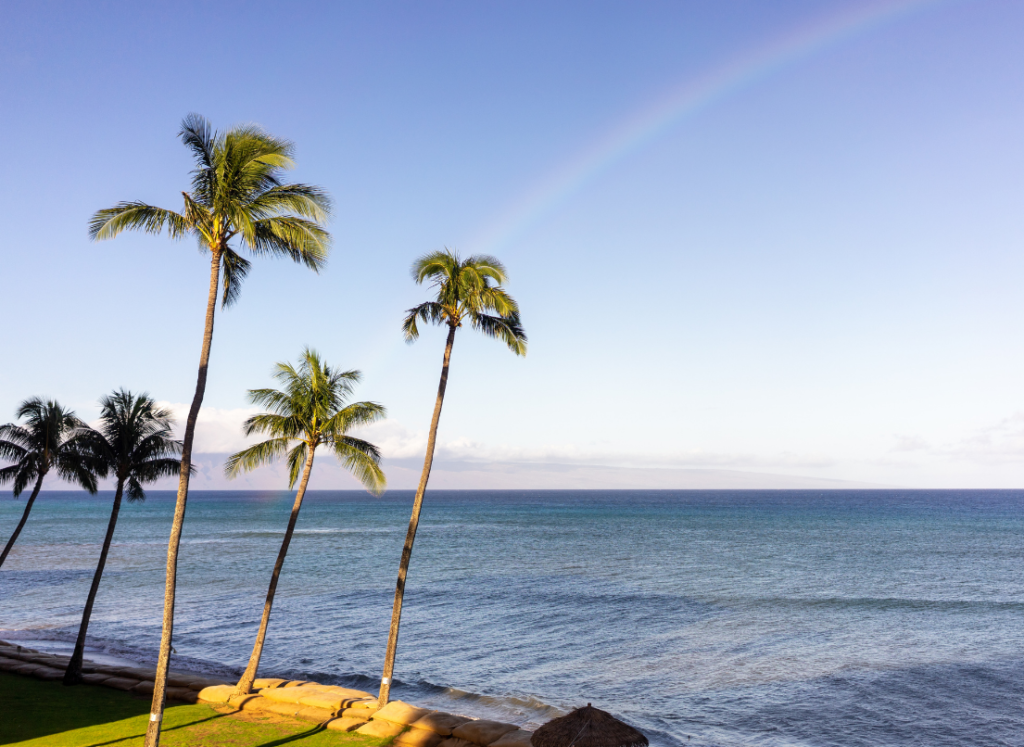
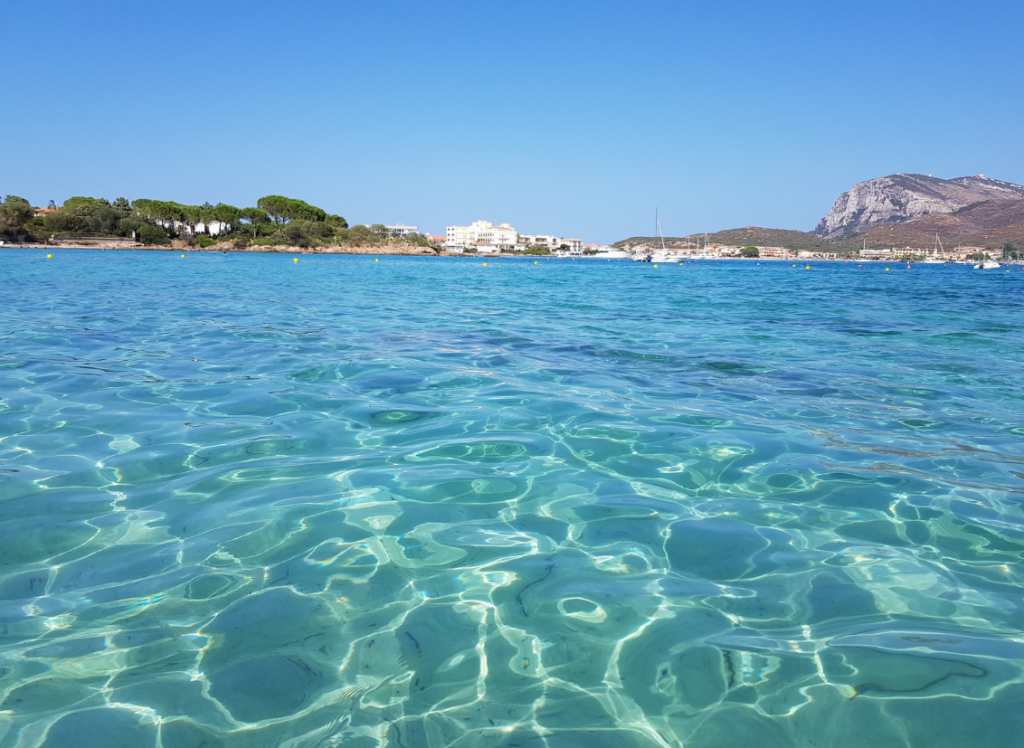



Flaps do not “help keep a plane level”. They function to increase lift, which will allow a slower speed on landing. And yes, pilots are trained to land without them.
Thanks for the clarification. That was my layman’s interpretation of what they were doing since the plane was rolling side to side a bit more than normal. Maybe that had to do with the faster landing speed? Or my altered perception due to an increased adrenaline rush! 🙂
Holly may be referring to “ailerons”, which are a set of smaller “flaps” normally located near the tips of the wings. The ailerons function exactly as what Holly had described. Actually she is not completely wrong as these ailerons are in fact mini-flaps.
Thanks for posting about the ailerons Casey. I learned something new today! I referred to them as “the flaps” because that’s what the flight attendant told my husband.
Hi Holly Gosh how appropriate for me to receive this at this time. In the last 5 weeks I been suffering attacks of Vertigo and dizziness. Came out of the blue. Last about 2 hours before they wear off. I been experimenting with Reflexology but on my feet and obviously awkward for me at times. I just printed off these hand ones to keep with me during the day and if and when I need to utilize I certainly will. I must say you write very interesting articles and always look forward to what you send out.
Thanks Mike! When I write a new article, I always have a feeling that it’s intended for a specific person. I just don’t know who, but someone will inevitably write to tell me how appropriate it was for them and how the timing was perfect. Thanks for sharing. I hope you are feeling more grounded and centered soon.
Hi Mike
Please check with your Dr.if this doesnt work or it doesnt stay away as could be something more serious
Great point Sue. Always check with your doctor to rule out any serious conditions.